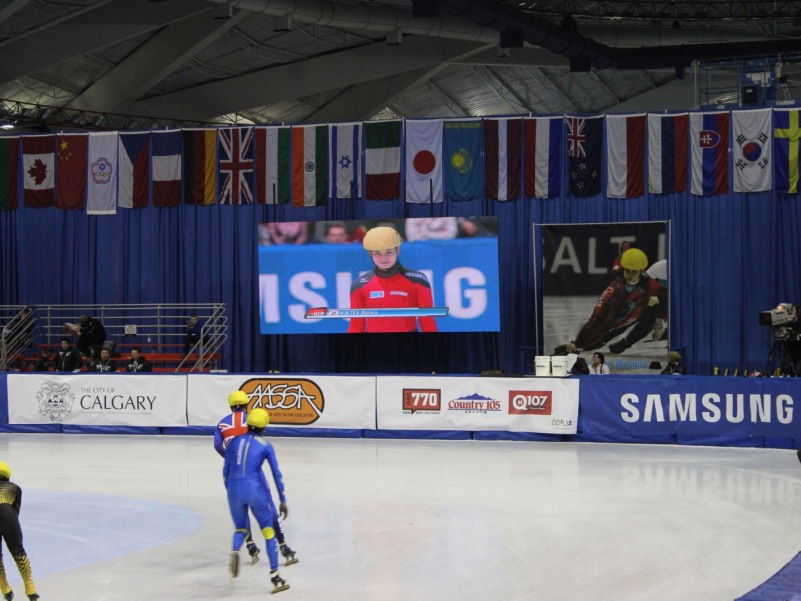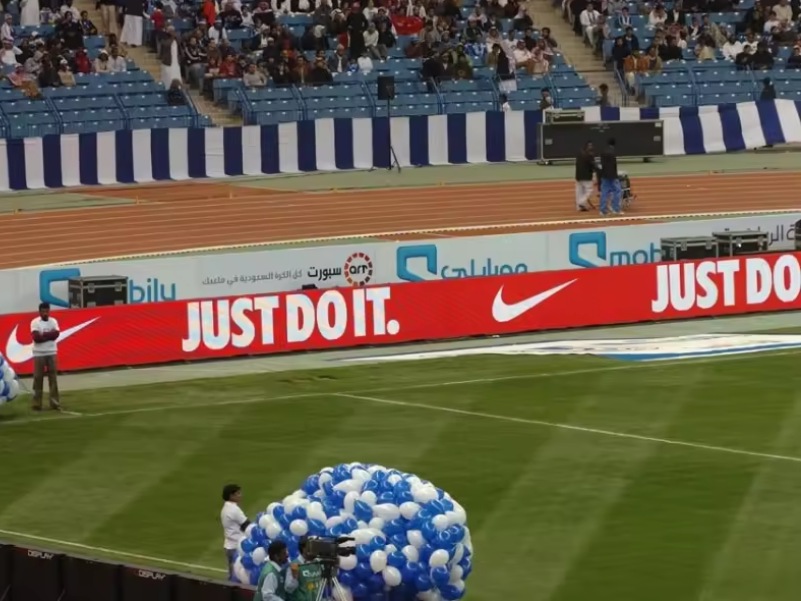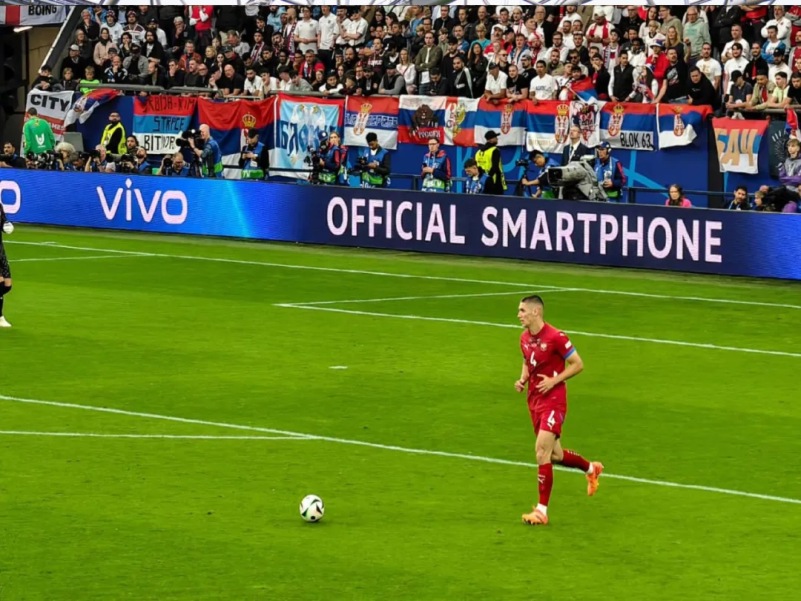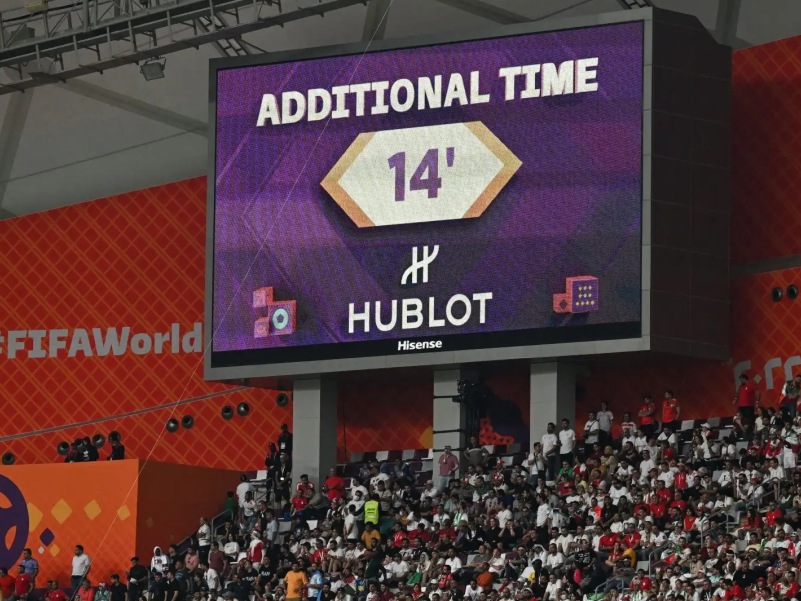LED Stadium Screen
Outdoor LED Display for Football Stadium Advertising
LED stadium display is a large-scale LED display system designed for various sports venues. It has high brightness, wide viewing angle and high-definition picture quality,
and can present scores, exciting replays, dynamic advertisements and other diversified contents in real time. Commonly used in football fields, basketball halls, comprehensive sports centers and other scenes, this type of display usually has high refresh rate, anti-glare treatment and all-weather protection performance, which significantly improves the audience's interactive experience and event communication effect, while providing sponsors with greater brand exposure value.

LED Advertising Billboard-LA Series
LED Advertising Billboard-LA Series Module size 320*160mm, 1m*1m large size panel Optimized structure, flexible installation Common cathode energy saving High
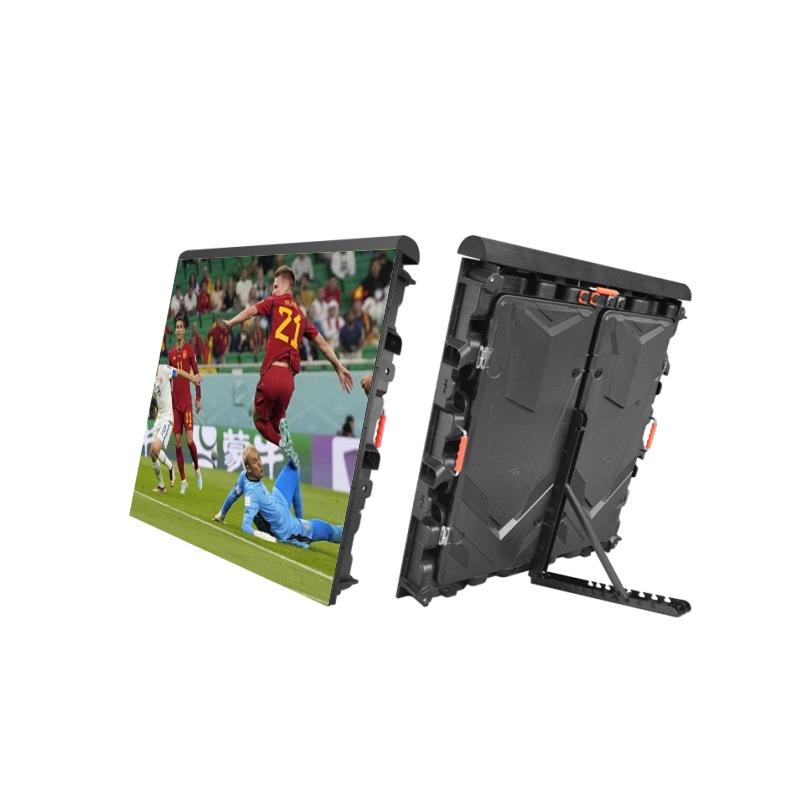
Sport LED Screen – SP Series
Stadium LED Display- SP Series Outdoor Sports Perimeter LED Display Board Pixel pitch P4/P5/P6/P8/P10 Standard Cabinet Size :1280*960mm 3840Hz high
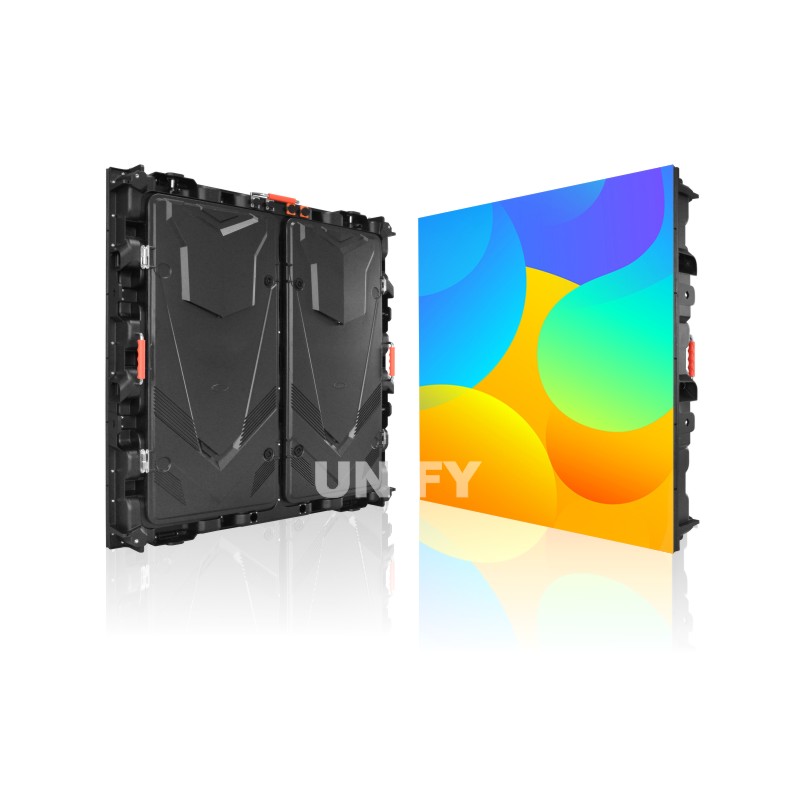
Advertising LED Screen – B Series
Advertising LED Screen – B Series Module size 320*160mm, panel size 960*960mm Pixel pitch P4/P5/P6/P8/P10 Wide viewing angle Brightness options

Outdoor LED Billboard-OK Series
Outdoor LED Billboard – OK Series Module size 320*160mm, panel size 960*960mm Pixel pitch P5/P6/P8/P10 to meet various needs Save
Stadium LED Screen

OK Series Stadium LED Screen
OK series supports curved and corner splicing, which can achieve naked-eye 3D visual effects and is suitable for stadium main screens or creative advertising displays.
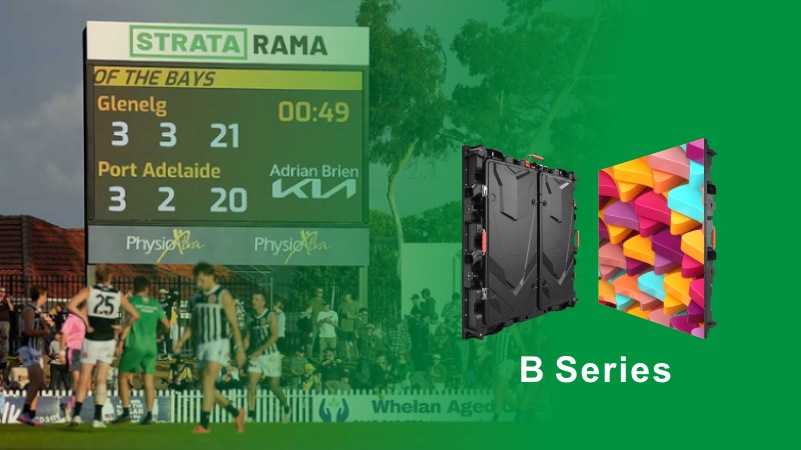
B Series Stadium Advertising Screen
The B series has a simple structure and low energy consumption, making it a cost-effective choice for small and medium-sized stadiums and basic advertising applications
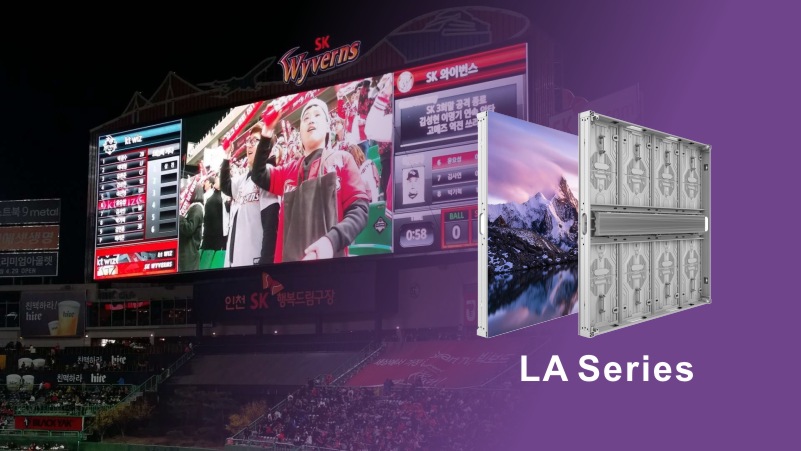
LA Series Outdoor Sports Screen
The LA series has high brightness and clear image quality, and is particularly suitable for large outdoor advertising spaces that can be viewed from a distance.
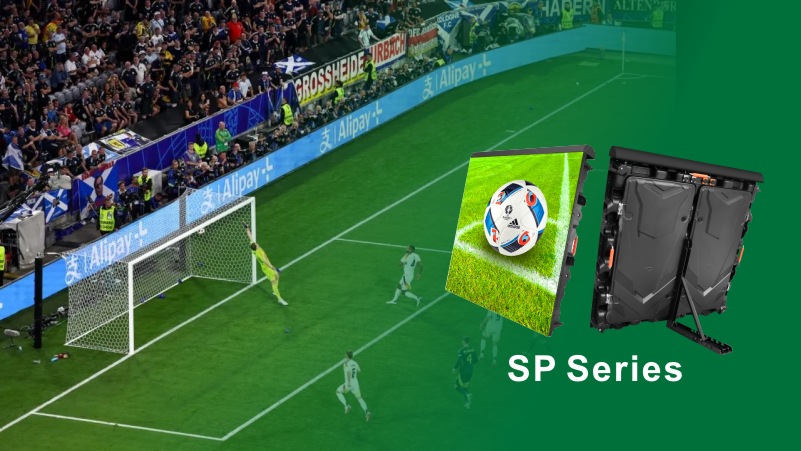
SP Series Professional Fence Screen
The SP series has passed the professional competition standard certification, has an anti-collision structure and a high refresh rate, and is an ideal solution for fence advertising screens. According to the scale and usage requirements of different venues, you can flexibly choose a matching series to create a more influential sports display solution.
Stadium LED Screen
What is an LED Stadium Screen?
An LED stadium screen is the big digital screen you often see in sports venues.
It plays live footage, replays, sponsor content, and player stats—all in real time.
Unlike older scoreboards, this one is brighter, more vivid, and built for motion.
The image stays sharp, even under bright sun or during evening matches.
You might find these screens above the crowd, along the field edges, or high on the stadium walls.
They don’t just display the game—they help create the full experience.
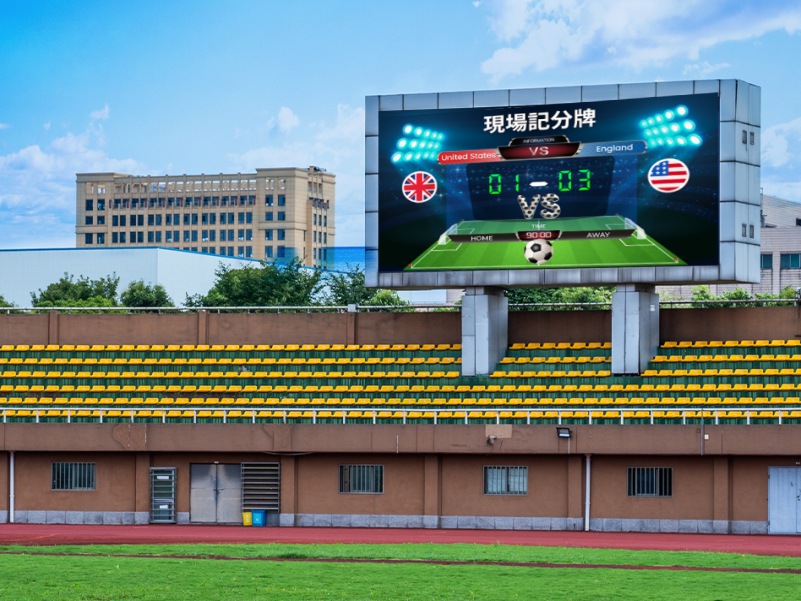
Six benefits of installing LED screens in stadiums
LED stadium screens are not just “clearer”, it changes the way the audience watches the game, and also reshapes the operating experience of the entire stadium.
Why are more and more stadiums choosing to upgrade? Here are the reasons:
1.The whole stadium is clearly visible, not afraid of weather interference
No matter which row you sit in, the picture is equally clear. The LED screen has high brightness and wide viewing angle, and you can clearly see the content of the picture even in the midday sun.
2.Real-time playback and data display
The wonderful moments are worth watching several times. The LED screen supports slow motion, playback, real-time scores and player data display, and the audience experience is more complete.
3.Brand exposure is larger and more valuable
LED screens are the favorite stage for sponsors. Advertisements can be played dynamically and switched in rotation, and the brand is exposed more frequently, and the exposure effect is more outstanding.


4. Interactive content brings you closer to the audience
You can play close-ups of the stands, selfies of fans, messages on social platforms…The LED screen has become a bridge connecting fans and the game scene, and the atmosphere is also full.
5. Flexible content switching, more efficient operation
Want to switch live screen? Want to insert an emergency announcement? It can be done in seconds. The LED system supports a variety of content formats, unified backend control, flexible and efficient operation.
6. Long service life, more worry-free in the later stage
Modern LED display screens are energy-saving and durable, with low maintenance frequency and stable operation. In the long run, it is a very cost-effective venue-level investment.
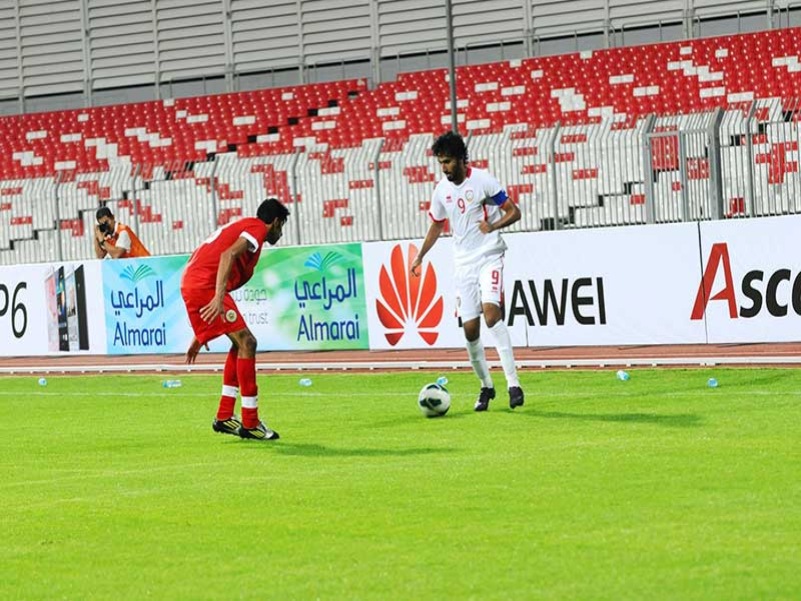
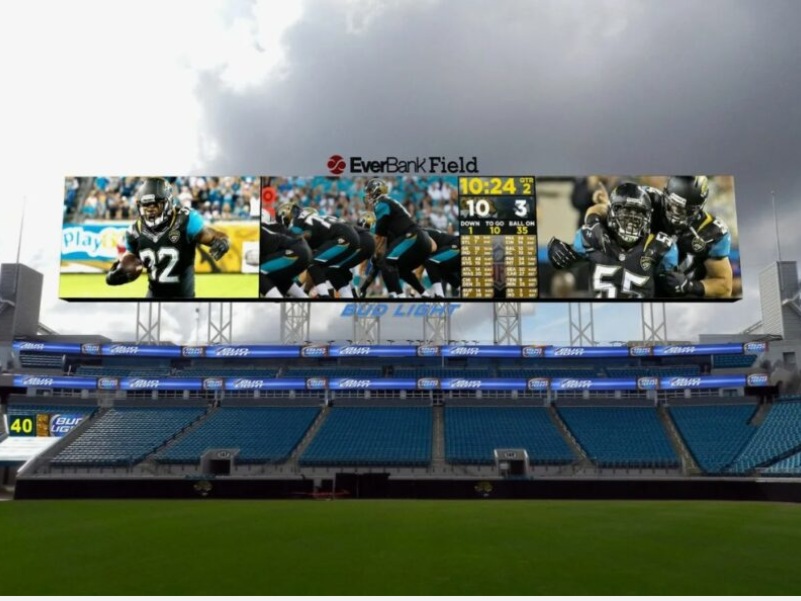

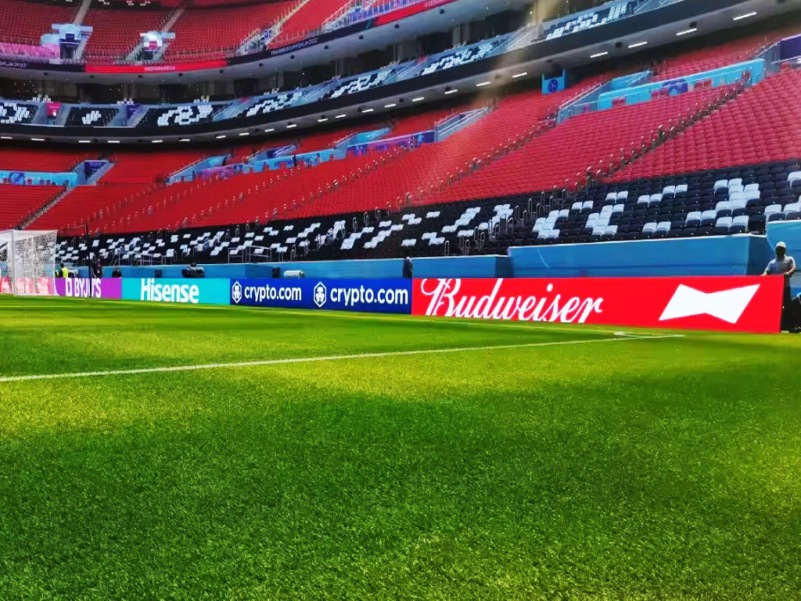
How does the LED stadium screen improve audience interaction and advertising conversion?
A LED screen is not just about playing game footage. It can also mobilize emotions, guide participation, and even make advertising “existent”. Audiences can see their own shots through the LED screen. Whether it is “shake to the big screen”, social media wall, or crowd hot spot tracking, it makes fans feel involved, willing to speak out, and willing to stay.
Advertisers also benefit from this -dynamic images + precise timing + emotional resonance, which are more eye-catching than traditional light boxes. Even a 10-second brand exposure is easier to leave a memory on the LED screen. The emergence of stadium LED display screen has turned “watching” into “interaction”, and has also changed advertising exposure from “passive viewing” to “active participation”.
Installation structure, wiring and maintenance suggestions for LED stadium screens
The large screens used in stadiums are large in size and installed high, and the requirements for structure and circuits are much higher than those for ordinary display projects.
Planning these links in the early stage can avoid problems such as difficult maintenance and unstable operation in the later stage.
Structural aspects:
LED large screens are usually built with steel structures, which must ensure wind resistance, earthquake resistance and uniform load-bearing.
The installation location may be above the stands, on the side walls of the venue, or hung on the roof trusses,so the structural plan must be customized in combination with the architectural drawings, and maintenance space must be reserved.
Wiring aspects:
It is recommended to use a dual power backup solution, and the main and standby switching improves safety.
The signal routing should be independently piped to avoid high-voltage lines or interference sources to ensure that the picture is stable and does not skip frames.
Wiring should also consider waterproofing, lightning protection, and easy troubleshooting.
Maintenance aspects:
Preferably support front and rear dual maintenance large screen structure, modules, power supplies, and receiving cards can be quickly disassembled and assembled.
It is recommended that the LED module adopts modular + magnetic structure for easy replacement;
It is necessary to clean the dust regularly, inspect the loose wiring, power supply contact, etc.
What are the different types of LED stadium screens?
There is not only one “main screen” for LED stadium displays.
Depending on the structure and usage requirements of the venue, the screens are usually divided into multiple types, each with its own functions.
Main Display: Installed in front of the stands or in the core area of the venue,
Used for live broadcast, playback, score, and event pictures, it is the visual focus of the audience.
Perimeter LED Screen: Installed on the fences around the stadium, with a long strip design, suitable for rolling advertisements and brand exposure.
It has high brightness and low viewing angle, which is very suitable for being brought into the picture by the camera during broadcasting to improve advertising ROI.
Scoreboard & Info Display: Dedicated to displaying basic information of the game such as score, time, substitutions, red and yellow cards, with fast response speed and strong anti-interference.
Backdrop / Event Screens: Mostly used for opening ceremonies and performances, it can be built into special-shaped, three-dimensional, and combined structures to create a visual atmosphere.
Small stand screens/Directional & Zone Displays:
Installed at the entrance, partitions, and aisles of the audience area to provide route guidance, safety tips, and other auxiliary information.
Different types of LED screens are usually linked through a unified system,
which requires independent control of content and unified picture style to ensure overall visual consistency.
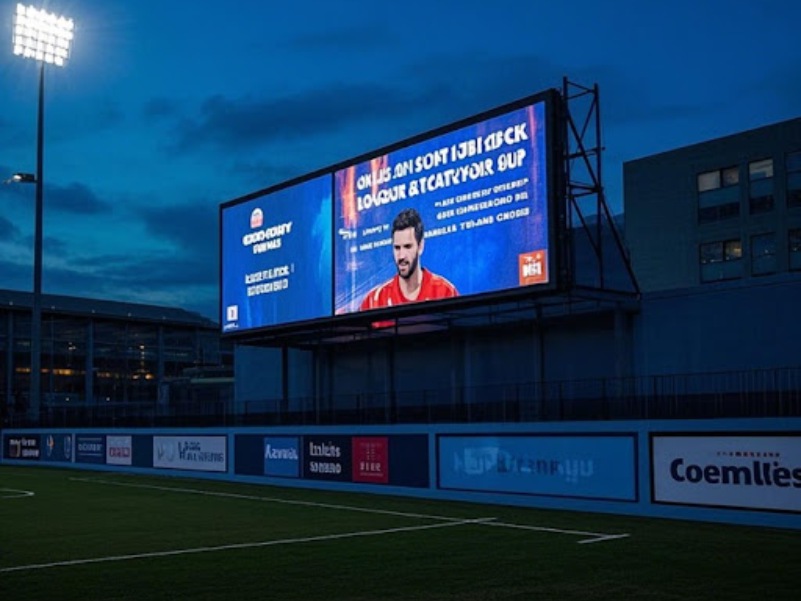
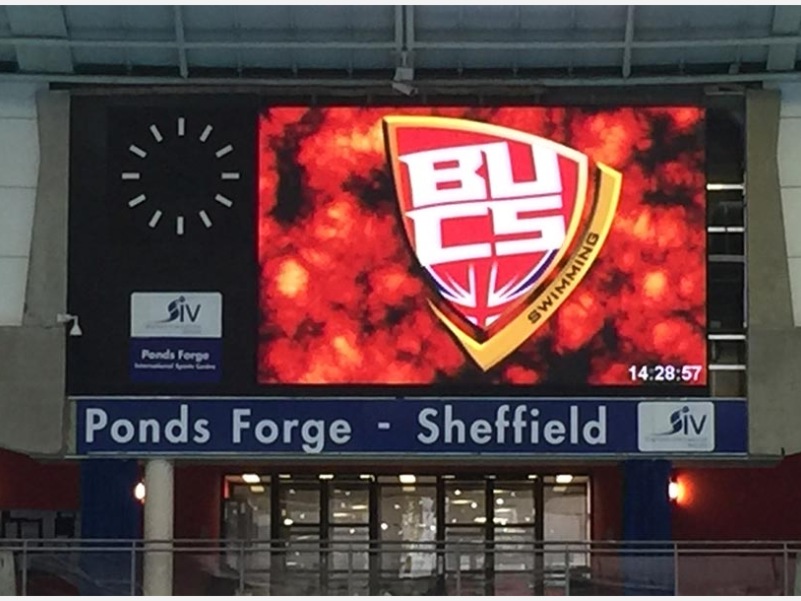
Technical requirements for stadium LED display screens in broadcasting and live broadcasting
Modern sports events are not only a visual experience for offline audiences, but also a content source for online live broadcasts and TV broadcasts.
Whether a large screen is “professional” depends on whether it can be highly compatible with the broadcasting system and meet various shooting and image processing requirements.
First, the refresh rate must be high enough.
If the refresh rate is too low (for example, lower than 1920Hz), it is easy for the camera to capture the picture with “scan lines”, “screen flickering” or unstable colors.
This not only affects the quality of the live picture, but may also disrupt the broadcast rhythm and cause brand and event picture defects.
Therefore, it is recommended to use a high-refresh LED display screen of at least 3840Hz and above to ensure that each frame is clear and stable, and adapt to different brands of cameras, slow-motion equipment, and up-scaling shooting systems.
Second, the control system must have synchronization capabilities.
In official competitions, LED large screens often need to display multiple content channels at the same time, such as game pictures, score subtitles, sponsorship advertisements, audience interactions, etc.
This requires the LED control system to support multi-source signal input, frame synchronization processing and one-button switching in the background to ensure that the picture content is accurate, without lag or delay.
Third, color consistency and brightness balance must be accurate.
TV broadcasts are extremely sensitive to picture details. Any inconsistent color temperature or sudden change in local brightness will be “magnified” in the lens.
Professional-grade LED sports screens need to complete module-by-module color calibration and brightness adjustment before leaving the factory, and support background remote parameter adjustment for quick correction before the game.
In addition, the live broadcast site also has high requirements for screen stability, anti-interference ability, and power redundancy.
Especially in high-traffic occasions such as the opening ceremony, finals, and star games, a large LED screen with poor performance may cause a “live broadcast accident” even if there is a small problem.
Therefore, if your venue involves TV broadcasts, online live broadcasts, event recordings, etc.,
the LED large screen must not only be “able to broadcast”, but also “broadcast stably, accurately, and beautifully” to truly improve the event level and brand value.
Common Misunderstandings and Suggestions in Purchasing LED stadium Screens
Stadium projects are large in size and require high investment. Many customers tend to fall into several “common pitfalls” when purchasing LED screens.
Misunderstanding 1: Only look at brightness, not refresh rate
Brightness is of course important, but if the refresh rate is insufficient, the screen is prone to flickering and frame breakage during live broadcast.
It is recommended to use at least 3840Hz or higher high-refresh LED sports screen to ensure that synchronous shooting and large-screen playback are not stuck.
Misunderstanding 2: Ignoring structure and protection design
Many people only focus on the screen itself, but ignore the structure and installation environment behind it.
For example, the LED screen of an outdoor football field needs to consider windproof, earthquake-resistant, drainage, lightning protection and other conditions.
Otherwise, the operation will be unstable after installation, and the maintenance cost will be higher.
Misunderstanding 3: Excessive pursuit of low prices and neglect of post-sales service
Some manufacturers quote very low prices, but the module standardization is poor and the after-sales response is slow.
Once there is a problem with the screen, not only will the repair be slow, but it may also delay the live broadcast of the event.
It is recommended to give priority to cooperating with manufacturers with stable supply, standardized spare parts and local service capabilities.
Misunderstanding 4: Not understanding the control system configuration
LED large screens cannot be played by plugging in a USB flash drive.
The competition site requires multi-channel images, real-time subtitle switching, and signal synchronization.
It must be equipped with a professional control system and the core hardware must not be wrong.
When purchasing LED sports screens, it is recommended that customers must combine the venue type, usage intensity, and content management requirements to make a system evaluation, and don’t just look at the parameters or unit price.
Service life and stability determine long-term investment returns
1.A sports LED screen is not a one-time investment, but a long-term asset.
If the frequency of use is high (such as lighting for more than 10 hours a day), you need to choose high-reliability lamp beads (such as NationStar, Kinglight), driver ICs and industrial-grade power modules.
These devices are 10%~20% more expensive than ordinary models, but they can bring longer life, lower failure rate and more stable operation.
Rather than frequent repairs in the future, it is better to spend a little more in the early stage and save more money in the long run.
Cost impact:
Although the initial cost of high-quality configuration is slightly higher (300~600 yuan per square meter), the maintenance and replacement costs can be saved by tens of thousands of yuan within 5 years.
2.Maintenance difficulty and spare parts standards affect later costs
The LED screen for sports venues has a high installation height and is difficult to maintain.
If there is no front and back two-way maintenance design, once the module or power supply has problems, the entire screen may need to be dismantled, increasing manpower and equipment expenses.
The use of modular magnetic suction structure, hot-swappable power supply and standardized spare parts not only makes maintenance faster, but also reduces downtime and improves event support.
Cost impact:
Although a structural solution that is easy to maintain is 5%~10% more expensive overall, it can significantly reduce labor costs and equipment rental costs (such as aerial vehicles).
3.Control system and content capabilities determine operational efficiency
Sports LED screens are not just “lit up”.
If you want to meet the needs of live broadcast, multi-screen synchronization, advertising, real-time switching of scores and subtitles, you must use a professional-level control system (such as NovaStar, Colorlight high-end kit), and support remote content management and background operations.
Although the basic control card solution is cheap, its functions are limited. Once it needs to be upgraded, it will bring secondary costs.
Cost impact:
Each mid-to-high-end control system is several thousand to tens of thousands of yuan more expensive, but it can avoid repeated investment caused by the lack of functions in the later stage, saving time and training costs.
4.Energy consumption control and long-term electricity expenses cannot be ignored
LED sports screens are running all year round, especially outdoor screens, and the energy consumption is amazing when running at high brightness.
Choose products that support energy-saving driver ICs (such as MBI5153), automatic brightness adjustment, and intelligent temperature control systems. Without affecting the picture effect, it can save 20% to 30% of energy consumption, which is especially significant in large stadiums.
Cost impact:
Take a 100㎡ large screen as an example, it can save nearly 10,000 to 20,000 yuan in electricity bills a year, and the long-term energy-saving effect is significantly better than the initial price difference.
5.Service capabilities and delivery cycles determine the pace of the project
Some LED screens are low in price because they do not include transportation, installation guidance, after-sales response, or even customized structures.
And suppliers with perfect services will provide drawing docking, delivery scheduling, spare parts, remote debugging, and even on-site technical support to ensure the smooth progress of the project from procurement to use.
Cost impact:
Although the purchase price of choosing a mature service brand is slightly higher, it can avoid delays, rework, and rising communication costs, especially for medium and large projects. The service value far exceeds the price difference
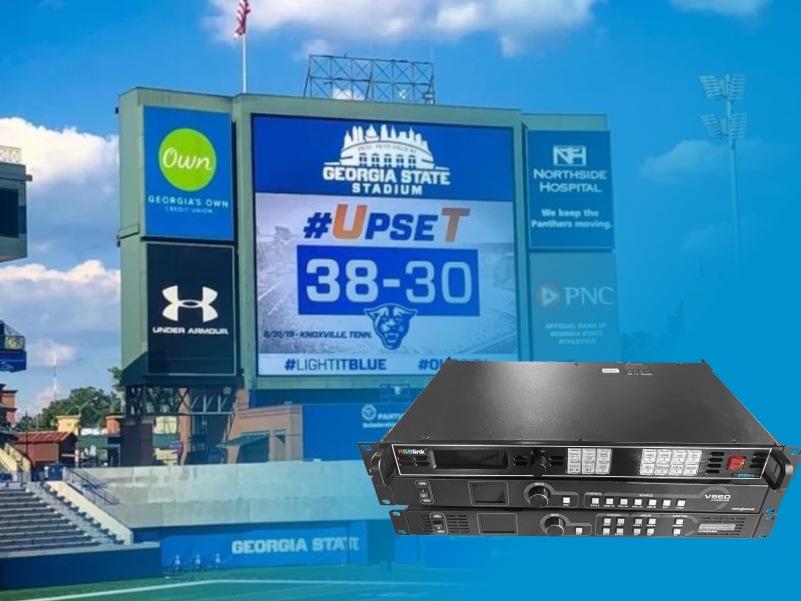
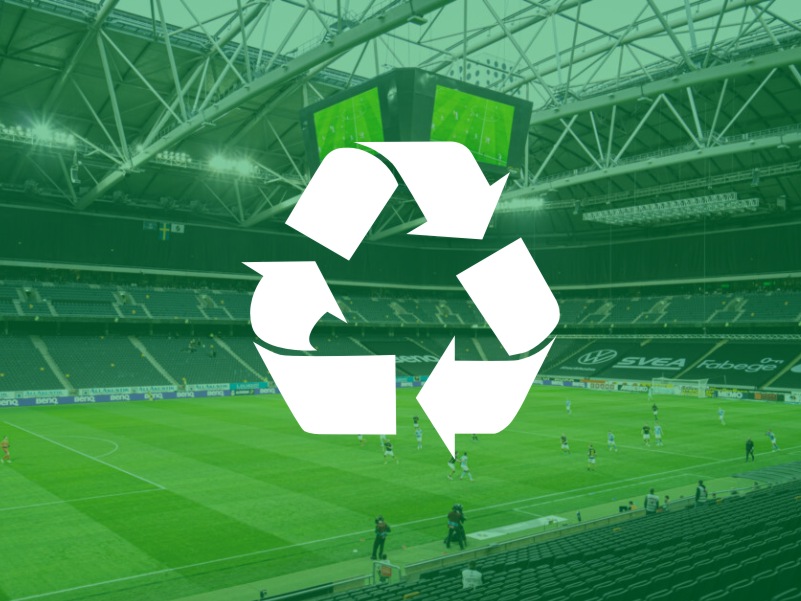
The future trend of LED stadium screens: smarter, clearer, and more environmentally friendly
With the continuous upgrading of display technology, LED stadium screens are not only “bigger and brighter”, but are developing in an all-round way towards intelligence, high definition and green energy saving.
First, ultra-high-definition resolution has become the mainstream trend. More and more stadiums are introducing 4K or even 8K LED screens, which can maintain clear and delicate picture effects in large venues, greatly improving the on-site viewing experience and broadcast quality.
Secondly, intelligent control systems are gradually becoming popular. Through the AI content management system, operators can realize automatic switching of advertisements, identification of audience hot spots, and intelligent push of interactive content, greatly improving operational efficiency and commercial conversion rate.
In terms of environmental protection, energy-saving LED display screens have become the focus of construction. High-efficiency driver ICs, automatic brightness adjustment, intelligent temperature control systems, etc. can effectively reduce energy consumption and meet the needs of energy-saving and carbon reduction transformation of stadiums.
In addition, naked-eye 3D and AR/VR interactive displays have also begun to enter sports scenes, bringing more immersive viewing experience and creative advertising forms to attract the attention of young audiences.
For venues with long-term upgrade plans, choosing an LED stadium screen that is compatible with future trends is a key step in achieving digital transformation and sustainable development. UnifyLED is constantly exploring these cutting-edge directions to help every stadium go further and see more clearly.
FAQ for outdoor sports LED screens
Q1: Can outdoor sports LED screens adapt to extreme weather?
Yes, professional sports screens usually have IP65 or higher protection levels, are waterproof and dustproof, and adapt to outdoor environments such as rain, snow, strong winds, and sunlight, ensuring stable operation during events.
Q2: What is the general brightness of LED screens for stadiums?
Usually between 5500–10000nits, depending on the viewing distance and the time of use. The SP series supports high-brightness output, and can maintain a clear picture even in strong daylight.
Q3: How is the anti-collision design of the fence screen achieved?
We use soft module frames and top rubber pads to effectively buffer athletes from impact, avoid injuries and protect the screen body.
Q4: Does the LED sports screen support multi-brand advertising rotation?
Yes. The control system can set timed playback, multi-content switching, and regional split screens to meet the high-frequency advertising needs of stadium commercial operations.
Q5: What parts does a stadium screen system include?
Including LED modules, cabinet structure, control system, power supply, bracket, wiring and content publishing software. We can provide overall solutions and technical docking services.
Conclusion:
UnifyLED provides reliable visualization solutions for every stadium
Whether it is a large stadium hosting professional events or a comprehensive sports center serving community activities, the display system is an indispensable part of modern venues. And UnifyLED Stadium LED Screen is a professional solution designed to meet these scenarios.
UnifyLED has been focusing on the field of sports display for many years. Its products cover multiple types such as main screen, fence screen, scoreboard, etc., with core advantages such as high brightness, high refresh rate, high protection level, convenient maintenance, and flexible structure. We know that every game must not only be played brilliantly, but also be seen clearly, broadcast smoothly, and presented powerfully.
Through in-depth research on different venue structures, audience distribution, and advertising needs, UnifyLED provides one-to-one system-level solution planning to help customers achieve cost reduction and efficiency improvement from selection, design, delivery to later operations. At the same time, it supports customized structure, multiple size specifications, and control system docking to adapt to a variety of events and commercial use needs.
Choosing UnifyLED is not only choosing an LED screen, but also choosing a stable and controllable visualization operation system to give your stadium a real “digital capability”.
📩 Welcome to contact the LEDfactory-UnifyLED team to get a customized venue LED display solution.
